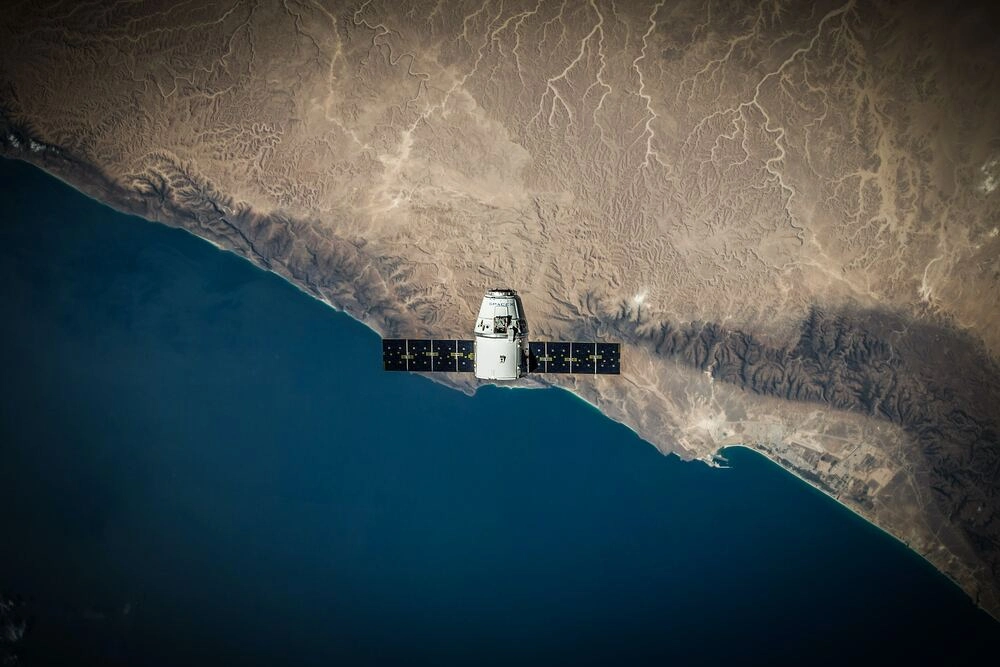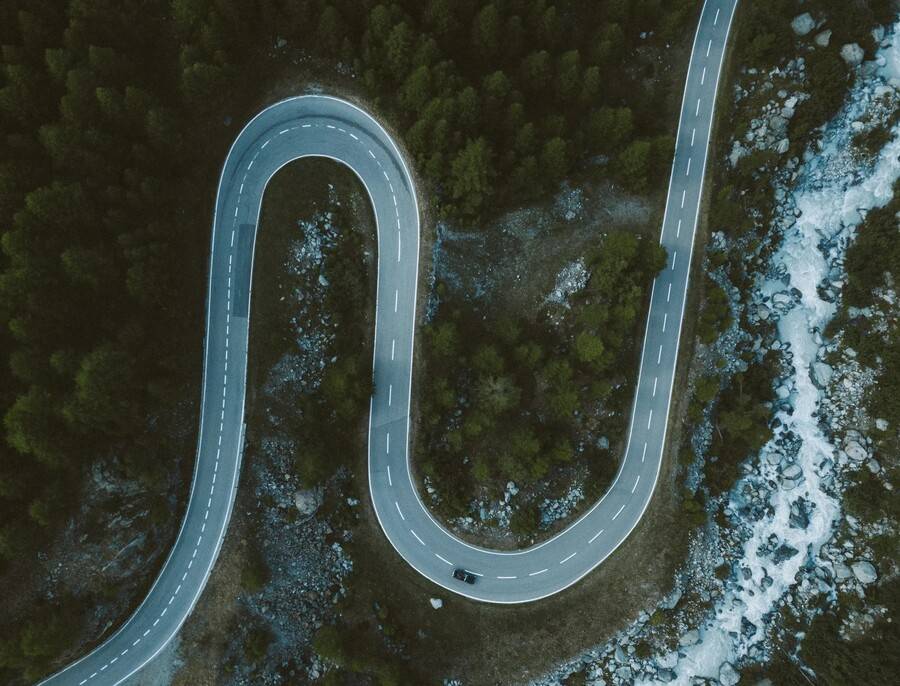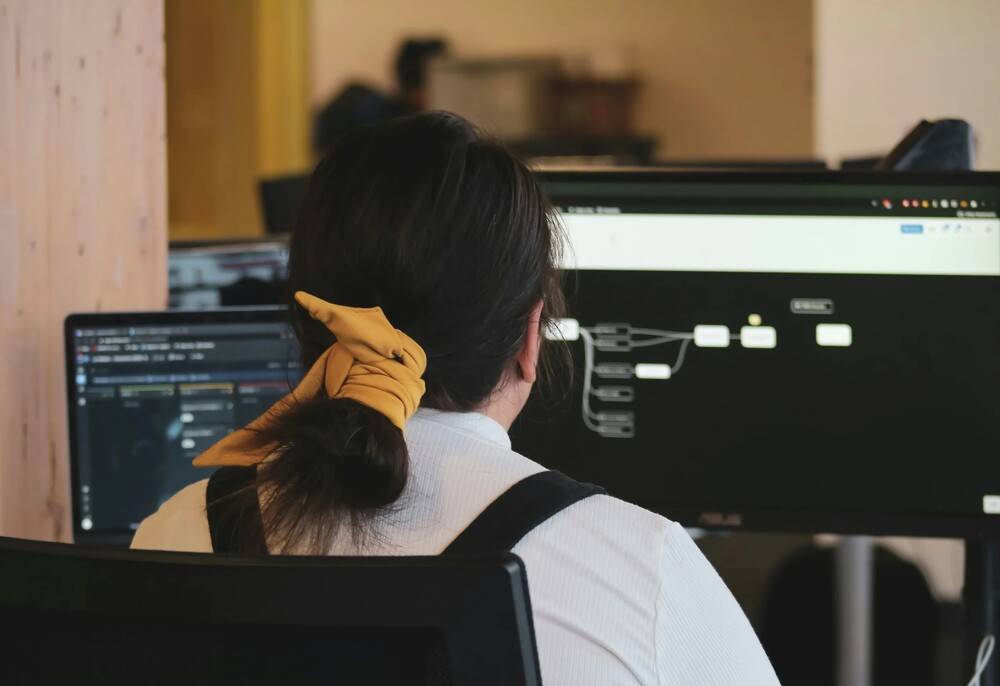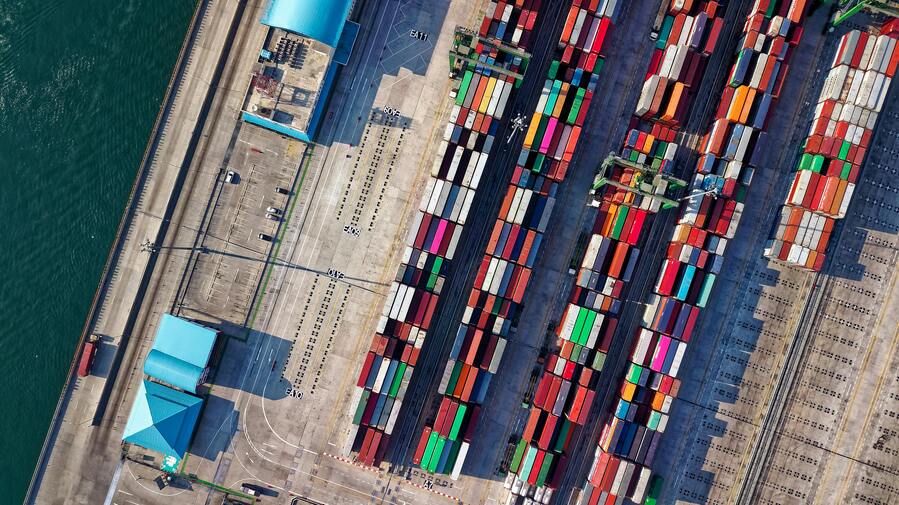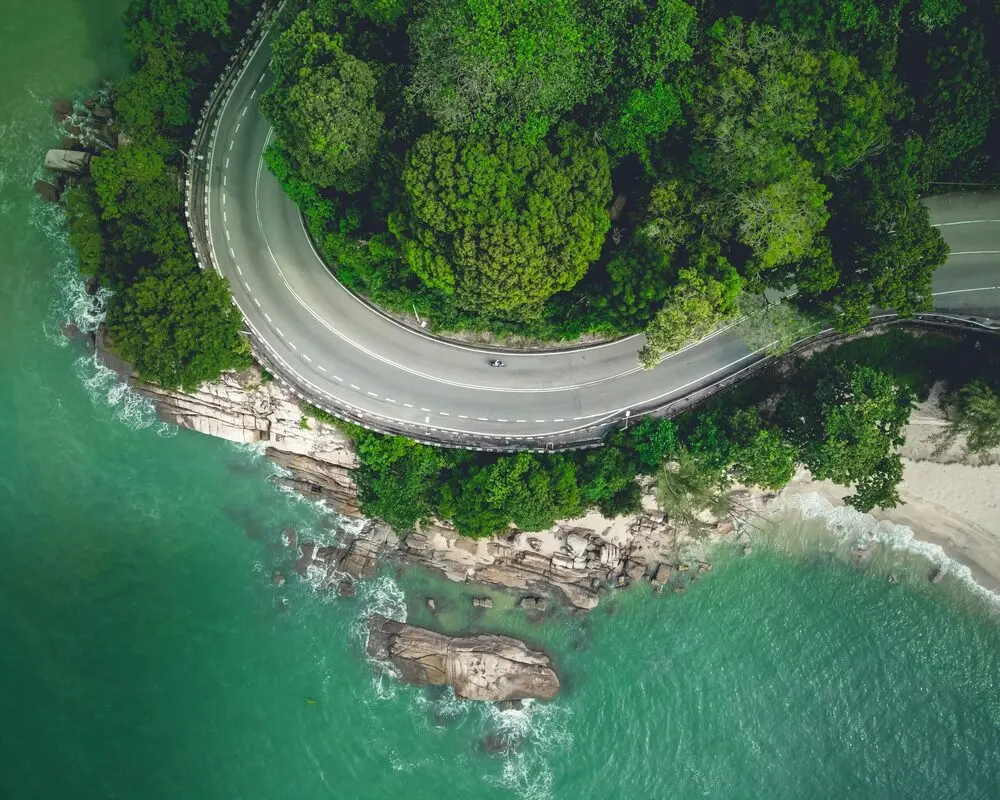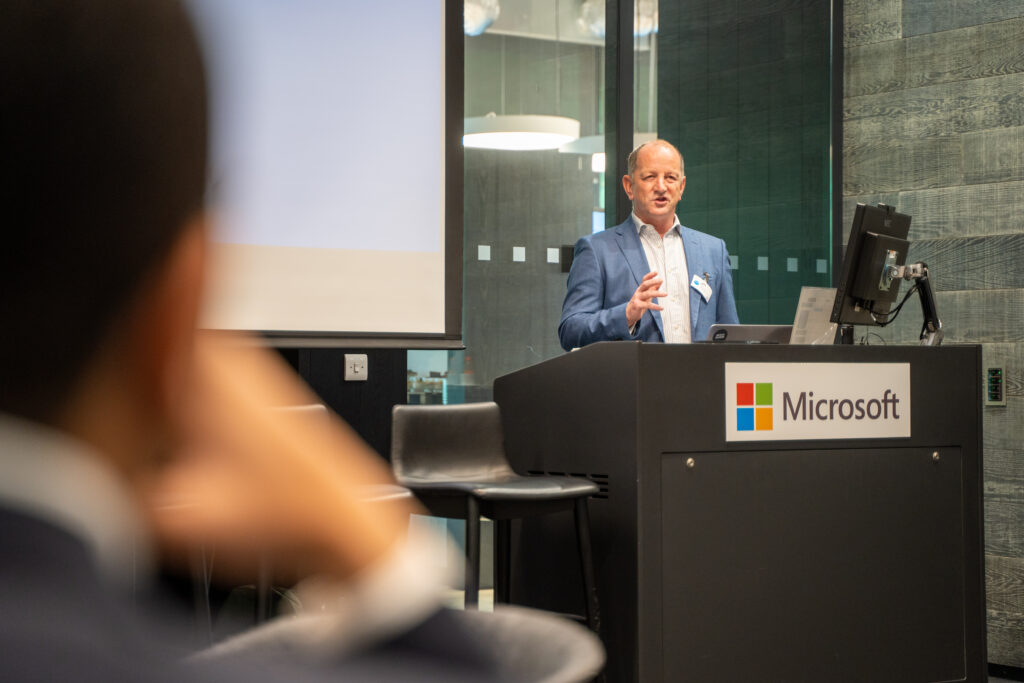After an incredible year, Ultralytics celebrates its first anniversary with the launch of YOLOv8.1 and the innovations of Oriented Bounding Boxes (OBB). This release marks a year of extraordinary achievements in AI technology. Last year, YOLOv8’s growing influence was demonstrated with over 20 million downloads of the Ultralytics package and the training of 19 million YOLOv8 models.
With YOLOv8.1, we witness a revolution in detecting angular or rotated objects. This version introduces models with Oriented Bounding Boxes, improving segmentation and performance optimization. Dive into the significant upgrades in model architecture and training functions, setting new standards in object detection.
In this context, we stand out in the field of AI, especially in the training, testing, and deployment of models like YOLOv8.1. Our expertise positions us to enhance YOLOv8.1’s capabilities, improving object detection accuracy and efficiency. This collaboration marks a fusion of innovation and practical application, promising to push the boundaries of what’s possible in AI technology. In this article, discover how we are redefining the future of object detection.
The History of YOLO
Exploring the world of YOLO (You Only Look Once), an algorithm that has revolutionised object detection with its speed and precision, focusing on detecting objects as a single regression problem. It directly predicts bounding boxes and class probabilities from complete images in one evaluation. Here’s a summary of the versions:
- YOLOv1 (2016): Pioneered the use of a single neural network to predict bounding boxes and class probabilities from full images. While fast, it was less precise than two-stage counterparts like R-CNN.
- YOLOv2 (YOLO9000, 2017): Introduced anchor boxes for improved accuracy and the ability to detect over 9000 object categories.
- YOLOv3 (2018): Included improvements such as the use of three different scales for predictions, enhancing detection of small objects, and incorporated Darknet-53 structure.
- YOLOv4 (2020): Optimised for parallel computation, efficient and fast on GPUs, with improvements like CSPNet, PANet, and SAM block.
- YOLOv5 (2020): Developed by Glen Jocher and Ultralytics, known for its simplicity and lightweight design, with improvements in architecture and training procedures.
- YOLOv6 (2022): Focused on balancing speed, accuracy, and model size, making it suitable for mobile and edge devices.
- YOLOv7 (2022): Delivered state-of-the-art real-time object detection performance, with architectural optimisations and training strategy improvements.
- YOLOv8: Also from Ultralytics, the latest version with significant advances and support for PyTorch, ONNX, OpenVINO, CoreML, and TFLite.
- YOLO-NAS (Neural Architecture Search): This model applies neural architecture search to YOLO to automate the design of network architectures for object detection tasks.
And now…
We are excited to present YOLOv8.1, the latest gem in the YOLO series. Now, with object detection using Oriented Bounding Boxes, we take precision and efficiency to new heights. This breakthrough marks a milestone in the evolution of YOLO, enabling detection at angles and rotations, especially in complex detection scenarios.
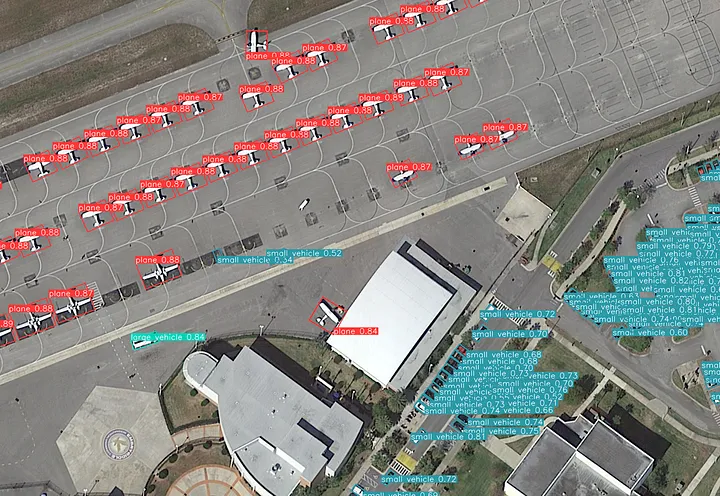
Ultralytics and its YOLOv8 OBB Models
The Ultralytics YOLOv8 framework offers specialised models where Oriented Bounding Boxes (OBB) are key to achieving precise and efficient object detection. These models, identified by the suffix -obb, such as yolov8n-obb.pt, are meticulously trained on the DOTA dataset. This dataset, consisting of high-resolution aerial images from sources like Google Earth, GF-2, and JL-1 satellites, is pivotal for detecting objects in aerial imagery. From aircraft to sports fields, each category evolves across versions, providing a rich learning experience.
In object detection, conventional bounding boxes face limitations when dealing with objects oriented vertically or horizontally. YOLOv8 OBB rises as a solution, enhancing not only detection accuracy, especially for objects with different orientations, but also the efficiency of the process. With a one-step approach and optimised neural network architecture, this model excels in performance.
Highlighting the significance of the DOTA dataset (Detection of Objects in Aerial Images), it stands as a large repository of high-resolution aerial images. With over 1.7 million oriented bounding boxes for 18 object categories, DOTA challenges and nourishes object detection models, offering a complete learning experience. Get ready to dive into the fascinating world of YOLOv8 OBB and its unrivalled partnership with DOTA.
Pretrained Models
Do you know what’s the coolest part? Ultralytics has YOLOv8 OBB pretrained models! These models have already been trained on the DOTA dataset and are ready to be used for specific aerial analysis. Let’s take a look at some of the available models:
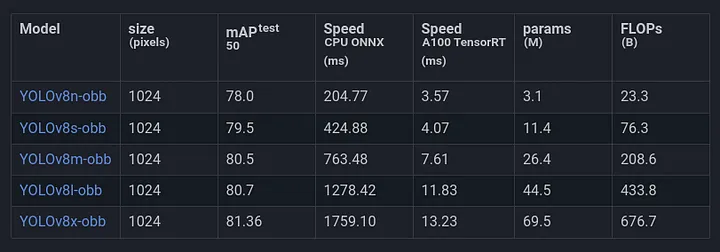
Predicting: very easy to use
Implementing a pretrained YOLOv8-obb model to predict oriented bounding boxes is as simple as providing an image to the model.
Python
from ultralytics import YOLO
# Load a model
model = YOLO('yolov8n-obb.pt') # load an official model
# Predict with the model
results = model('https://www.gim-international.com/cache/4/6/d/3/1/46d3179f7a866b93fb52c33da3554e4585c3084e.jpeg') # predict on public imageCLI
yolo obb predict model=yolov8n-obb.pt source='https://www.gim-international.com/cache/4/6/d/3/1/46d3179f7a866b93fb52c33da3554e4585c3084e.jpeg' # predict with official model on public imageHere are various sources you can use to make predictions with YOLOv8-obb:
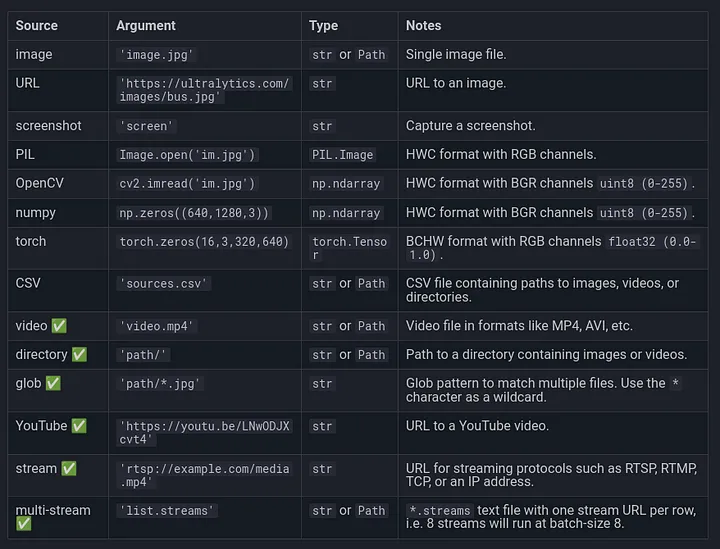
Results
Model Export
Exporting models using the Ultralytics framework offers several advantages, with one of them being enhanced speed. This straightforward process converts your model into formats such as ONNX, CoreML, and TensorFlow Lite. The best part? It’s compatible across different platforms and devices.
This flexibility allows seamless integration into a variety of environments, from mobile apps to edge devices. Plus, the YOLOv8 framework by Ultralytics makes this export easy, offering an AGPL-3.0 license for general use, and a Commercial License for more specific projects.
Python
from ultralytics import YOLO
# Load a model
model = YOLO('yolov8n-obb.pt') # load an official model
model = YOLO('path/to/best.pt') # load a custom trained model
# Export the model
model.export(format='onnx')CLI
yolo export model=yolov8n-obb.pt format=onnx # export official model
yolo export model=path/to/best.pt format=onnx # export custom trained modelReflection
The YOLOv8.1 technology by Ultralytics, with Oriented Bounding Boxes (OBB), marks a transformative leap in object detection technology. This advancement significantly impacts aerial image analysis and its integration into various platforms, showcasing the continuous evolution and importance of the YOLO series in AI. From its inception (YOLOv1) to today, each iteration has progressively improved the model’s efficiency, accuracy, and applicability.
The ability to export these models for various real-world applications highlights the practicality and robustness of YOLOv8.1, marking a crucial development in computer vision and AI.
Remember, we are leading the way in AI and data analysis. With the expertise to leverage these constantly evolving technologies, whether you’re diving into the wonders of AI or incorporating these advancements into your operations, we are the ideal partner. Speak with our team and explore the possibilities that AI and data innovation have to offer.
